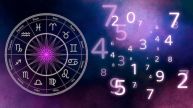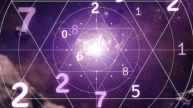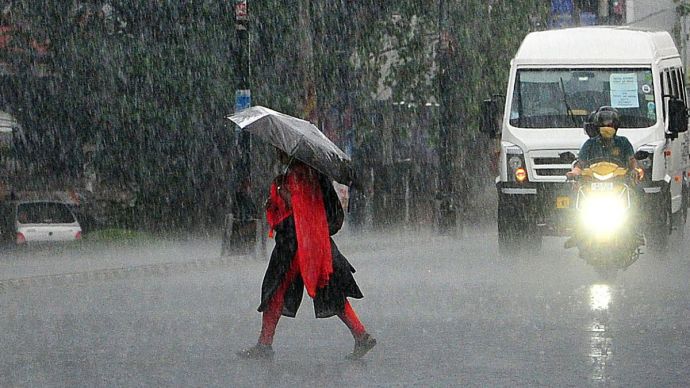Chaitra Navratri 2025: It is a 9 day festival honoring Goddess Durga which starts on March 30, 2025. This festival not only marks the Hindu New Year but also symbolises the triumph of good over evil. Explore its significance, rituals, and regional celebrations that unite devotees across India.
This festival is dedicated to worshipping Goddess Durga and her nine divine forms. It marks the beginning of the Hindu lunar new year and is observed with great devotion all over India.
Chaitra Navratri 2025 Dates: When the Festival Begins and Ends
Chaitra Navratri, a nine-day festival honoring Goddess Durga, will start on March 30, 2025, and end on April 7, 2025.
In many parts of India, this festival marks the beginning of the Hindu New Year and ends with Ram Navami, which celebrates the birth of Lord Ram.
In the fall, there is another Navratri celebration called Sharad Navratri. This year, it will begin on September 22 and end on October 1. The festival finishes with Vijayadashami, or Dussehra, which celebrates the triumph of good over evil.
Significance of Chaitra Navratri: A Time for Blessings and Renewal
Chaitra Navratri is a very important festival both spiritually and culturally. During these nine days, people believe that Goddess Durga comes down to bless her followers, helping them overcome challenges and grow spiritually.
Each day of the festival is dedicated to a different form of Goddess Durga, known as the Navadurga, the nine forms of the goddess. The festival represents the victory of good over evil, similar to the Sharad Navratri in the fall.
Chaitra Navratri also marks the arrival of spring, a time for new beginnings and growth. During this time, many people fast, meditate, and practice self-discipline, asking for the goddess’s blessings for good health, wealth, and happiness.
Here’s the information about Chaitra Navratri 2025 presented clearly in a table format:
Chaitra Navratri Calendar 2025
| Day | Date | Goddess | Significance |
|---|---|---|---|
| 1st Day | March 30 | Maa Shailputri | Daughter of the mountains |
| 2nd Day | March 31 | Maa Brahmacharini | The unmarried form of Parvati |
| 3rd Day | April 1 | Maa Chandraghanta | Symbol of peace and bravery |
| 4th Day | April 2 | Maa Kushmanda | The creator of the universe |
| 5th Day | April 3 | Maa Skandamata | Mother of Lord Kartikeya |
| 6th Day | April 4 | Maa Katyayani | The fierce form of Durga |
| 7th Day | April 5 | Maa Kalratri | Destroyer of darkness and ignorance |
| 8th Day | April 6 | Maa Gauri | Symbol of purity and serenity |
| 9th Day | April 9 | Maa Siddhidatri | Bestower of wisdom and supernatural powers |
9 Colours of Navratri and Their Significance
| Day | Colour | Goddess | Significance |
|---|---|---|---|
| 1st Day | Grey | Maa Shailputri | Balance and the destruction of evil |
| 2nd Day | Orange | Maa Brahmacharini | Energy, enthusiasm, and strength |
| 3rd Day | White | Maa Chandraghanta | Peace, purity, and calmness |
| 4th Day | Red | Maa Kushmanda | Power, passion, and devotion |
| 5th Day | Royal Blue | Maa Skandamata | Divine energy and wisdom |
| 6th Day | Yellow | Maa Katyayani | Happiness, positivity, and knowledge |
| 7th Day | Green | Maa Kalratri | Growth, prosperity, and new beginnings |
| 8th Day | Peacock Green | Maa Gauri | Compassion and serenity |
| 9th Day | Purple | Maa Siddhidatri | Spirituality, ambition, and transformation |
Rituals and Traditions of Chaitra Navratri
- Ghatasthapana (Kalash Sthapana): On the first day, devotees perform Ghatasthapana, where a sacred pot (Kalash) representing Goddess Durga is installed, marking the beginning of the festival.
Fasting and Worship
During Navratri, many people fast and eat only satvik (pure) food. This includes fruits, milk, and grains like buckwheat (kuttu) and water chestnut flour (singhare ka atta).
Puja and Mantra Chanting
Each day, prayers and aarti (religious songs) are performed to honor a specific form of Goddess Durga. Sacred texts like the Durga Saptashati are also recited during the festival.
Kanya Pujan
On the eighth or ninth day (Ashtami/Navami), young girls, who are seen as symbols of divine energy, are worshipped. They are given food, clothes, and gifts as a sign of respect and love.
Ram Navami Celebration
Navratri ends with Ram Navami, which celebrates the birth of Lord Ram. Temples hold grand celebrations, sing bhajans (devotional songs), and hold processions in his honor.
Regional Celebrations of Chaitra Navratri
- North India: In states like Uttar Pradesh, Punjab, and Haryana, people celebrate Chaitra Navratri with special prayers in temples.
- Maharashtra: It is celebrated alongside Gudi Padwa, the Marathi New Year.
- South India: The festival coincides with Ugadi, the New Year in Telugu and Kannada cultures.
- West Bengal: It marks the start of preparations for Durga Puja, which is celebrated later in the year.
What is Ghatasthapana?
Ghatasthapana is a key ritual that marks the beginning of Navratri. It involves the invocation of Goddess Shakti (divine energy). The most auspicious time to perform this ritual is the first one-third of the day during Pratipada, the first day of Navratri. It can also be done during Abhijit Muhurta, a special time considered favorable for important rituals.
Key Items Needed for Ghatasthapana
| Item | Description |
|---|---|
| Wide Clay Pot | To sow the Sapta Dhanya (seven grains) |
| Clean Soil | To plant the Sapta Dhanya |
| Sapta Dhanya (Seven Grains) | Seeds of seven different grains |
| Small Clay or Brass Pitcher | Also known as Kalash |
| Sacred Water (Ganga Jal) | To fill the pitcher |
| Sacred Thread (Moli/Kalaya) | Used for tying the pitcher |
| Scent (Perfume) | For offering fragrance |
| Supari (Betel Nuts) | Included in the ritual offerings |
| Coins | Symbolizing wealth and prosperity |
| 5 Leaves of Ashoka or Mango Tree | For blessings and prosperity |
| Rice | Part of the ritual offerings |
| Unpeeled Coconut | Wrapped in red cloth for worship |
| Red Cloth | To wrap the coconut |
| Marigold Flowers | Preferably used for offerings |
| Durva Grass | For purification and blessings |












